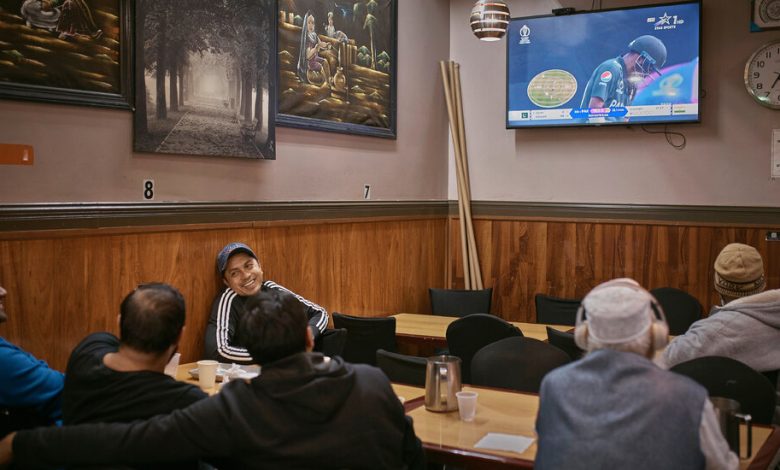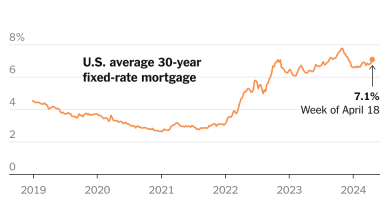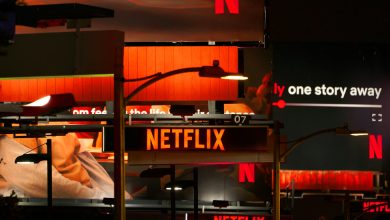Media Companies Eye Cricket-Loving Diaspora in the U.S.

Right after morning prayers on a Saturday this month, members of the Masjid Quba mosque in Brooklyn joined a party.
In between bites of halwa and sips of chai at Lahori Chilli on the edge of the Midwood neighborhood — the center of Little Pakistan — patrons offered hopeful, yet measured, commentary. Pakistan was taking on India, its fiercest on-field and geopolitical rival, in each side’s first match of the men’s cricket World Cup in India.
“Pakistan and India is simply a thrill,” said Nisar Khan, 49, who moved from Pakistan 18 years ago.
For decades, early-morning communal gatherings were the only way for the South Asian diaspora to experience cricket matches. Pakistani, Indian and Bangladeshi Americans would pack restaurants, movie theaters and student unions to connect, through pay-per-view telecasts, with the game and culture they had left behind.
These days, those watch parties are more sparse. More and more, fans can simply watch games from their living rooms. Recognizing the growing clout of South Asian Americans, media companies have invested heavily in cricket in recent years. ESPN and Willow TV, owned by the Times of India Group, share the American rights for this year’s World Cup. The Pakistan-India match, like others from the tournament, was streamed on ESPN+.
“I see this the same as I see anime on Netflix,” said Michael Pachter, a tech analyst at Wedbush Securities. It’s “a very small slice of their overall subscriber base, but a rabid group of fans who love the content.”
It is one of a number of ways that various companies are trying to capitalize on the relatively small — but loyal and growing — audience for cricket in the United States.
Investors have poured more than $1 billion to expand the sport in the United States, and spent more than $100 million to build cricket stadiums for a new league. The league’s team owners include Satya Nadella, the chief executive of Microsoft; the Indian actor Shah Rukh Khan; and Mukesh Ambani, an Indian telecommunications businessman.
The sport will be played at the 2028 Olympic Games in Los Angeles, the first time in more than a century that cricket will be included. Next year’s Twenty20 World Cup — a truncated version of this year’s event, with matches that take much less time — will take place in North America. India and Pakistan will also play their first match on U.S. soil as part of the tournament.
But where businesses and politicians see an opportunity, many of the five million Americans of South Asian descent see the game — and life — they left thousands of miles away.
Whether all of this ultimately succeeds will be largely determined by fans like Bhaveshkumar Davda, who was born in India but grew up in New York City in the 1980s. In the early 2000s, Mr. Davda, 52, had to go to movie theaters to watch cricket, but he was able to watch the Pakistan-India match this month at home. After the game, he donned an Indian cricket hat and a Knicks starter jacket while walking on the street in Jersey City’s Little India, jubilant over India’s victory.
“Everybody loves to watch cricket,” Mr. Davda said. “Even the old people, even the young.”
While many Americans unfamiliar with cricket view the sport with curiosity, the scale of its global popularity is undeniable, largely because of the intense interest from South Asians.
When the Indian national team plays a big match, workdays are frequently interrupted, stores close and routines otherwise grind to a halt. The India streaming service Hotstar, which Disney owns, said 35 million people had viewed the Pakistan-India match on the service. The Indian cricket star Virat Kohli has more Instagram followers than the N.B.A.’s LeBron James.
Satyan Gajwani, the vice chairman of the digital arm of the Times of India Group and one of the investors trying to increase interest for cricket in the United States, said focusing on Indians who lived outside India was a big part of Willow’s strategy. He noted the affluence of Indian Americans, who make up a majority of the South Asian population in the United States. According to the latest census estimates, Indian Americans have the highest median household income of any group in the country.
“This is what should be a powerful and lucrative and well-served audience,” he said. “From a business perspective, this seemed like something you could build something around.”
Today, Willow reaches four million U.S. households and is distributed on carriers like DirecTV, Dish and Comcast, a far cry from when it began in 2003 as a site that offered often unreliable streams of international matches. It has been helped along by the growth of the South Asian American population — which doubled from 2010 to 2020 — and the overall improvement of streaming infrastructure.
Before it started streaming cricket, ESPN bought Cricinfo (now known as ESPNcricinfo), a website dedicated to cricket coverage, in 2007. The site now brings in millions of hits in traffic every month. John Lasker, senior vice president for ESPN+, said ESPN’s cricket coverage had helped it reach “fans we weren’t serving before.”
After sharing the rights to this year’s World Cup with ESPN, Willow owns most rights to stream and broadcast the sport to North American audiences for the next five years. It’s also the media partner of the new domestic professional league, Major League Cricket, which played its inaugural season in July.
Cricket had long struggled to break through in the United States. Upstart leagues flamed out because of a lack of funding and organization, while the U.S. cricket federation was expelled from the International Cricket Council amid financial woes. Media companies like Nimbus and Zee Media found little success broadcasting Indian matches in America.
But the success of Twenty20, cricket’s shortest format, and the continued immigration and increasing clout of South Asian Americans elevated the game.
In test cricket, the oldest and most traditional form of the sport, matches can last as long as five days and produce no result, a fact that often baffles American sports fans. Test matches are somber affairs that stop for tea and refreshment breaks, with both teams wearing white uniforms. Even one-day matches, as in this year’s World Cup, can last up to eight hours.
At Twenty20 matches, which take only three hours, each side wears colorful garb as pop music blares in between balls and cheerleaders keep the energy high. Their shorter format incentivizes the sport’s most exciting aspects: big hits and run chases.
Cricket could still struggle to gain widespread backing. While the South Asian population is booming, the community represents a tiny slice of TV audiences.
But cricket fans bring an outsize level of intensity and commitment. According to data from Comscore, the typical Willow viewer watched the channel for more than 24 hours per month, nearly twice as much as ESPN and nearly four times as much as the MLB Network.
Now, the key to expanding the sport in the United States is catering to the less rabid observers. Watching, playing and experiencing cricket up close is what can bring cricket “beyond just the pure South Asian diaspora,” Mr. Gajwani said.
Morrisville, N.C., was one of two host cities for Major League Cricket’s inaugural season, with sellout crowds of more than 3,500 for each match in late July. Vendors at the stadium sold Indian ice cream and butter chicken, and lively Desi music embodied the raucous atmosphere. The South Asian population in Morrisville has grown rapidly over the past quarter-century, with immigrants drawn by high-paying tech jobs in the Research Triangle region.
The town was building a park for baseball around a decade ago, before deciding to dedicate it to cricket, realizing the sport was more popular locally, according to T.J. Cawley, the mayor of Morrisville. In July, Church Street Park was a site for Major League Cricket, and it hosts a local amateur cricket league.
Mr. Cawley, who grew up playing ultimate Frisbee in Westchester County outside New York, said he had also “played in the league for a few seasons.”




